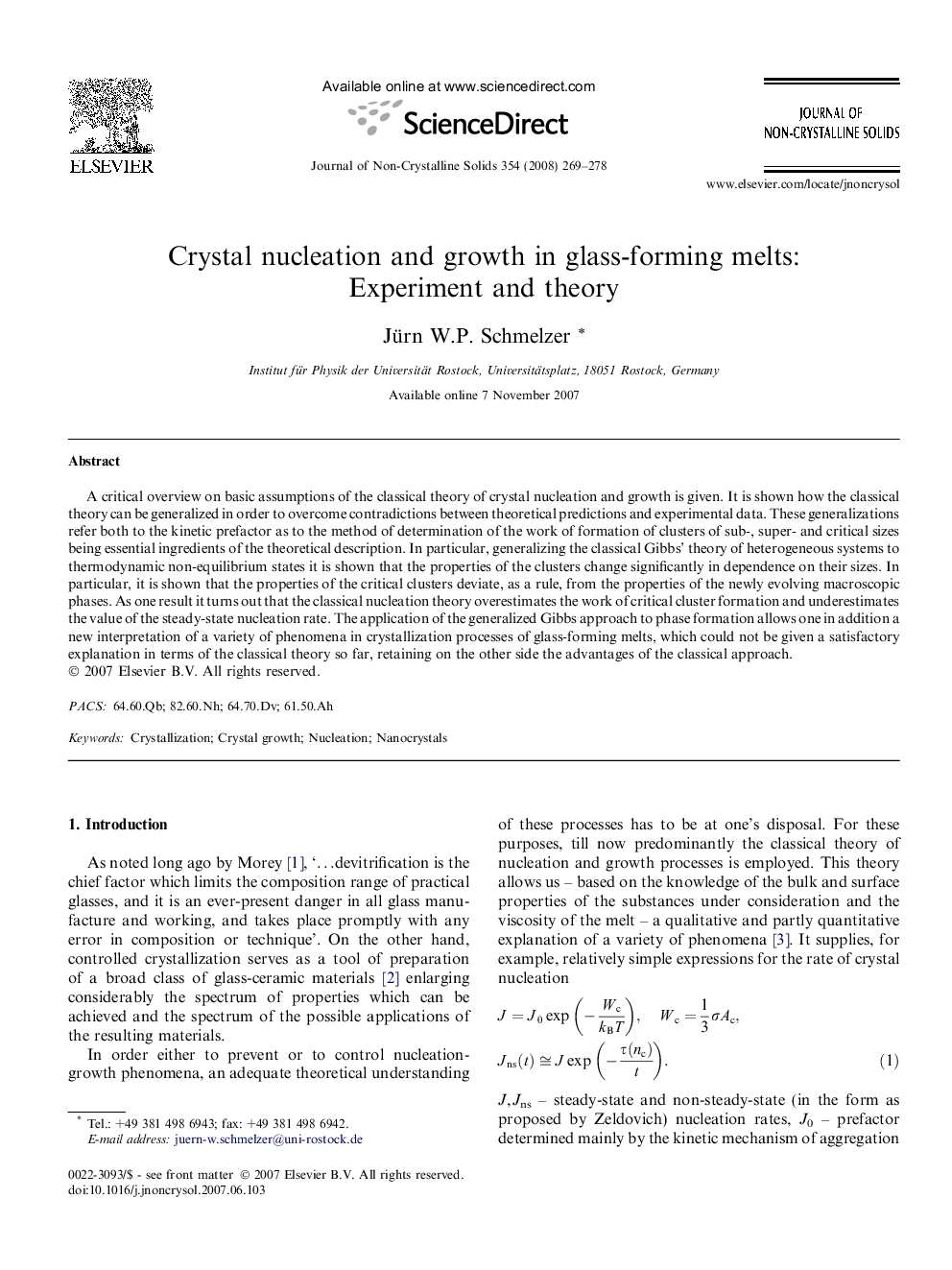| Article ID | Journal | Published Year | Pages | File Type |
|---|---|---|---|---|
| 1485054 | Journal of Non-Crystalline Solids | 2008 | 10 Pages |
A critical overview on basic assumptions of the classical theory of crystal nucleation and growth is given. It is shown how the classical theory can be generalized in order to overcome contradictions between theoretical predictions and experimental data. These generalizations refer both to the kinetic prefactor as to the method of determination of the work of formation of clusters of sub-, super- and critical sizes being essential ingredients of the theoretical description. In particular, generalizing the classical Gibbs’ theory of heterogeneous systems to thermodynamic non-equilibrium states it is shown that the properties of the clusters change significantly in dependence on their sizes. In particular, it is shown that the properties of the critical clusters deviate, as a rule, from the properties of the newly evolving macroscopic phases. As one result it turns out that the classical nucleation theory overestimates the work of critical cluster formation and underestimates the value of the steady-state nucleation rate. The application of the generalized Gibbs approach to phase formation allows one in addition a new interpretation of a variety of phenomena in crystallization processes of glass-forming melts, which could not be given a satisfactory explanation in terms of the classical theory so far, retaining on the other side the advantages of the classical approach.
